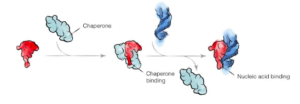
A superpower we take for granted.
Scientists say it is impossible for a human body to go without food for longer than 8 days, with some optimists claiming that up to 21 days is sometimes possible. Even the Bible considers 40 days of fasting the ultimate feat of bodily strength. Yet what’s not possible for a human — even the legendary Christ — appears to be fairly mundane for creatures that are comparable to us in size, anatomy and lifespan. These creatures are bears.
Bears have a remarkable knack for starvation. Unlike humans, they can enjoy their breakfast in mid-September to have their lunch only in April! I guess if they would be into academic research or the literary career, it would be easy for them to implement this golden rule by Kingsley Amis: “A bad review may spoil your breakfast, but you shouldn’t allow it to spoil your lunch.”
— Hey bear, a bad review may spoil your breakfast, but you shouldn’t allow it to spoil your lunch.
— Easy as pie, pal. Just give it to me in September (proceeds to reading comments by Reviewer 2, yawns, and falls asleep).
So, what’s the trick? What makes bears so good in their ability to cope with starvation? The answer is hibernation.
All animals are equal? You’ve got to be kidding. Hibernation. We sort of know what hibernation is, but really — not quite. When I was a kid, my understanding of hibernation — mainly learned from Fozzie Bear — was plain and simple: a long nap. Over the years, however, I learned that the actual state of hibernation is much deeper and more complex than usual sleep. Although we do not fully understand this process, we now know that hibernation has many unique metabolic signatures that distinguish it from ordinary sleep, and mechanisms of hibernation appear to be wildly distinct in different species. This suggests that the ability to hibernate has evolved many times in the history of life on Earth, with many species inventing their own unique ways of hibernating.
For instance, when grizzly bears hibernate, their body temperature decreases from 38 to 31°C; their heart rate drops from 40-50 to just 8-19 beats per minute; their respiration decreases from 6-10 to just about 1 breath per minute; their circadian clocks get shut off; and their metabolism not only slows down but changes in such a way that bears do not release bodily waste for several weeks. Instead, they turn their urine into protein through a urea recycling process, along with other metabolic changes that allow them to survive cold, despondent winters.
But in other species, like Arctic ground squirrels, the process of hibernation looks strikingly different. These animals undergo the process of “supercooling,” in which their average body temperature drops to -3°C, with only their heart and brain remaining slightly warmer. Unlike most other animals, these squirrels can somehow prevent the nucleation of ice crystals in their bodies. This allows them to remain alive and soft, yet technically frozen, when the air temperature drops to -26°C. Just imagine if we, humans, would have such a skill!
Even a more impressive example of hibernation can be found in smaller animals, ironically known as water bears or tardigrades. While actively growing tardigrades are highly sensitive to various stressors, including heat and cold, things totally change as they hibernate. When these caterpillar-looking creatures encounter starvation or stress, they rapidly purge most of the water from their bodies. This “dry hibernation” allows these (not-so-much-)water bears to survive prolonged stress for decades and possibly much longer. In this state, tardigrades can survive exposure to extreme environments, including temperatures as low as -200°C and as high as 150°C, or high doses of radiation, or life in the open space outside our planet.
Thus, hibernation is a superpower: when organisms hibernate, they can do things impossible in their ordinary sleep or alert state: being able to enter a state of hibernation allows organisms to survive in some of the most extreme conditions known to science. No wonder, we, humans, would gain a lot if we could understand this process better and learn how to induce hibernation at a desired time in a target organism, including our own bodies. Putting gravely ill people or astronauts to sleep would be one immediate application of such a hibernation by design.
More common than you think. What is even more important about hibernation is how common it occurs in nature. Contrary to popular belief, hibernation is not limited to large animals or “weird” insects. In fact, hibernation is routinely exercised by practically all known microorganisms, including most studied bacteria.
One reason we know little about the hibernation of microorganisms merely stems from semantics. When bacteria hibernate, we usually do not call them ‘hibernating’. Instead, we call them ‘dormant’ or ‘persistent’. Semantics frequently screws us up. Remeber George Carlin’s ‘Soft language’? While not deliberate or malicious, this use of different terms for hibernation of animals as opposed to hibernation of germs creates a common and wrong perception that hibernation is rare, and the ability to hibernate is limited to just a handful of animal species that need to survive harsh winters.
Instead, we actually know that when bacteria face starvation or stress, including exposure to certain drugs and therapies, they undergo a conceptually similar transformation to the one observed in grizzly bears, squirells or tardigrades: some bacteria lose their water, some shut off most (but not all) of their metabolism, some produce special anti-freeze agents that prevent formation of ice crystals when bacteria are exposed to sub-freezing temperatures. This allows bacteria to survie in hostile environments for a very long time. For example, recent studies of the Greenland ice sheet have identified and ‘resurrected’ a specimen of the bacterium Chryseobacterium greenlandensis that are 120,000 years old! And it is possible that 120,000 years is very far from the actual survival limit for a hibernating microorganism.
This example goes to show that hibernation — frequently viewed as something exotic — is in fact one of the most common survival strategies of modern microorganisms. What is even more important: at least in the microbial world, the process of hibernation shows that life can be put on hold, paused, or at least marginally suspended for thousands and thousands of years without loss of viability. Thus, a typical germ can easily outperform Briar Rose, making bacteria extremely successful in surviving not only starvation and stress but also clinical drugs that we use to cure bacterial infections.
When organisms hibernate, their molecules can hibernate too. What happens inside a living cell when an organism hibernates? It was believed until recently that when a living cell encounters environmental stress, it ceases most of its metabolic activities and its key enzymes remain vacant and idle until conditions improve. However, it has become clear in recent years that organisms, from bacteria to humans, can employ a special mechanism to protect their key enzymes from degradation or unwanted activity under conditions of stress. This mechanism is based on putting their enzymes into a state akin hibernation of animals, known as molecular hibernation. Typically, molecular hibernation involve enzyme association with a specialized inhibitor/partner that occupies the active site of this enzyme.
One example of hibernating enzymes includes protasome. Proteasome is an enzyme complex that catalyzes the degradation of proteins. In some species of animals, the activity of proteasome decreases during hibernation, allowing the animal to conserve energy. This is accomplished by the binding of an inhibitor called lactacystin to the active site of proteasome, which prevents it from catalyzing the degradation of proteins.
Another example is calcineurin, an enzyme that catalyzes the dephosphorylation of target proteins in response to calcium signals. In some species of animals, the activity of calcineurin decreases during hibernation, allowing the animal to conserve energy. This is accomplished by the binding of an inhibitor called cyclosporin A, FK506, and Tacrolimus to the active site of calcineurin, which prevents it from catalyzing the dephosphorylation of target proteins.

 Every time I hear people ranting about life being unfair, huffing and puffing if things don’t go their way, I recall this stunning visual:
Every time I hear people ranting about life being unfair, huffing and puffing if things don’t go their way, I recall this stunning visual: 


